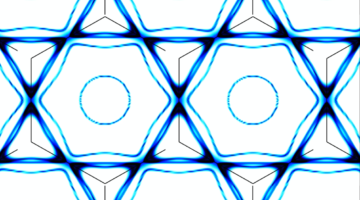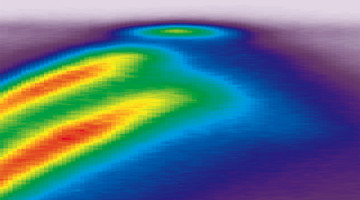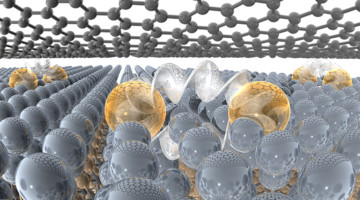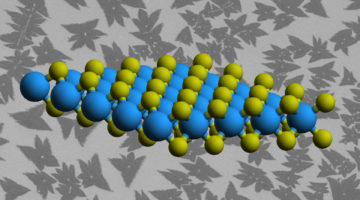Kagome metals have long mystified scientists for their ability to exhibit collective behavior when cooled below room temperature. A research team has discovered that the kagome electrons’ unusual synchronicity is due to another behavior known as an electronic singularity, or the Van Hove singularity, which involves the relationship between the electrons’ energy and velocity. Read more »
The Elusive Electronic Structure of Liquid Metals Unveiled
Over 50 years ago, renowned physicists formulated theoretical models for the electronic structure of liquid metals. Now, for the first time, researchers observed the distinct spectral features predicted by those models, at the interface of a crystalline insulator (black phosphorus) and disordered dopants (alkali metals). Read more »
Autonomous Data Acquisition for Scientific Discovery
Researchers at large scientific facilities such as the ALS have applied a robust machine-learning technique to automatically optimize data gathering for a variety of experimental techniques. The work promises to enable experiments with large, complex datasets to be run more quickly, efficiently, and with minimal human intervention. Read more »![]()
![]()
Graphene Outperforms Metal Junctions for 2D Semiconductors
Researchers found that graphene performs ten times better than metal in transmitting a photoinduced current across interfaces with 2D semiconductors. Nanoscale-resolution band-structure measurements provided a deeper understanding of charge transport in these systems and will help in engineering more efficient contacts. Read more »
The Flat Band in Magic-Angle Graphene Visualized
Researchers visualized flat band structures associated with exotic electronic phases in stacked graphene layers offset from each other by a “magic angle.” The work corroborates theoretical predictions and has significant implications for phenomena of technological and fundamental interest, such as topological phases and superconductivity. Read more »![]()
![]()
A Scalable Platform for Two-Dimensional Metals
Using a new method for stabilizing a two-dimensional (2D) metal on a large-area platform, researchers probed the origins of the material’s superconductivity. The work represents a notable milestone in advancing 2D materials toward broad applications in topological computing, advanced optics, and molecular sensing. Read more »![]()
![]()
Elusive Kagome Electronic Structures Revealed
Electronic-structure studies showed that both infinitely light and infinitely massive particles coexist in a material with a star-shaped (kagome) crystal lattice. The material’s rich array of electronic behaviors shows promise for future spintronic applications and represents a new frontier for studying exotic phases of matter. Read more »![]()
![]()
A Nanoscale View of Defect Effects on Band Structure
In the first comprehensive study at the ALS involving nanoARPES, researchers probed the electronic effects of defects in monolayer tungsten disulfide at the nanoscale. The extremely small scale of the measurements makes nanoARPES a great discovery tool that will be particularly useful for understanding new materials as they are invented. Read more »
Scientists Take a Deep Dive Into the Imperfect World of 2D Materials
Researchers combined a toolbox of techniques to home in on natural, nanoscale defects formed in the manufacture of monolayer WS2, measuring their electronic effects in detail not possible before. The latest result marks the first comprehensive study at the ALS involving nanoARPES, which researchers enlisted to probe the 2D samples with x-rays. Read more »
The Electronic Structure of a “Kagome” Material
Scientists have verified exotic electronic properties predicted to emerge in a ferromagnetic material with “kagome” (trihexagonal) lattice symmetry. The greater understanding of kagome materials afforded by this work helps open up a new path toward goals such as ultralow-power electronic devices and quantum computing. Read more »![]()
![]()









